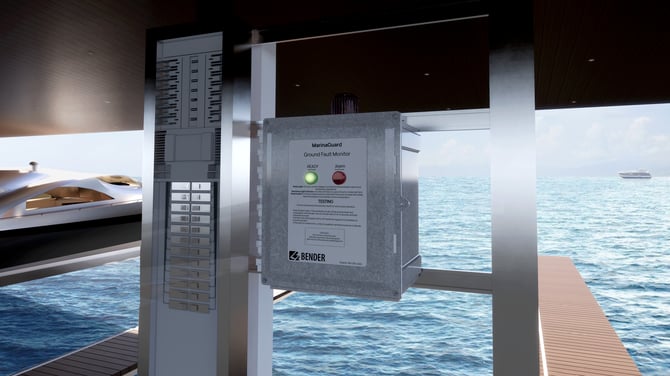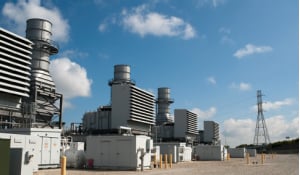How to Retrofit Ground Fault Detection Systems

When upgrading existing installations, one must retrofit the new equipment to cohesively integrate with the existing layout. This allows for the reuse of existing, working equipment, along with incorporating new equipment, and ultimately, reducing costs. It also allows facilities to update or upgrade certain functionalities in their electrical distributions.
However, it is important to realize that the initial installation may have been built years ago and may not have evolved as quickly as local and national electrical codes. In these circumstances, certain upgrades may be necessary to respect the newest code requirements, so it is highly advised to check with electrical experts before undergoing any retrofit project. In this article, we will look into two categories of retrofits: simple and complex retrofits.
Standard retrofit ground fault detection systems
The most common retrofit occurrence Bender sees is when an existing installation does not have any ground fault detection or protection, but the end-user or technician decides to add this functionality. There are many reasons for this, including personnel safety concerns or incidents, code requirements, or concerns made during an electrical inspection.
Regardless, the first step is to identify the goals of this retrofit application: which pieces of equipment need ground fault detection? What are the objectives of detecting ground faults? Certain industries and applications will also have their specific code requirements to fulfill, for example, marinas or submersible pumps.
Once the goals are set, you will know what solution for ground fault detection is needed, including its desired setpoint and/or requirements. Bender offers a comprehensive portfolio of solutions for ground fault detection, which includes the LifeGuard® series and MarinaGuard® series.

Render of a typical MarinaGuard installation at a dock.
Commissioning our LifeGuard and MarinaGuard products and the rest of our product portfolio is simple, but Bender also offers commissioning services to support you. We verify all user wiring, including power, CT connections, and tripping operations. We also test the functionality of each ground fault detection component.
Complex retrofit ground fault detection systems
Generally, complex retrofits are projects that involve additional functionality, such as Neutral Grounding Resistors and their monitoring, fault location, and system integration (Ethernet, Modbus). Especially if that equipment is to be integrated into an existing switchgear, we recommend reaching out to your local Bender representative. The first goal is to set the objectives of the retrofit. This may include:
- Converting an ungrounded system to a High Resistance Grounded (HRG) system
- Adding feeder current transformers (ZSCT) inside an existing switchgear for fault location
- Replacing a discontinued Federal Pioneer DSP MKII detection system, etc.
As shown above, the scope of the project can vary greatly depending on the goals of the retrofit project. Depending on the complexity, it may be recommended to employ the services of an engineering consulting firm.
Explore some of our primary retrofits:
- Conversion to HRG system
Many existing installations rely on Delta/Delta ungrounded transformers, and instead of replacing these transformers into a Delta/Wye transformer, it is possible to purchase a Zig-Zag transformer that creates an artificial neutral, thus connecting it to a neutral grounding resistor. Bender offers made-to-order ZZ transformers and NGRs that can fit any application.
Bender also offers consultative services to review the existing installations in case there may be other complex features such as Main-Tie-Main support, paralleling generators support, and 2nd ground fault protection.
- Fault location
Contrary to some beliefs, fault location can be achieved for both ungrounded and resistance grounded systems. In both cases, it involves the installation of ZSCTs on each feeder to be monitored. Bender offers specialty CTs such as the WR series (rectangular), WF or CTAF series (Rogowski-style), and CTAS series (split-core), these are recommended for retrofit applications. The Rogowski-style and split-core are particularly useful as they prevent the installers needing to remove the existing cables to fit them into the new CTs.
- Replace DSP MKII with RFB-700/500
The Federal Pioneer DSP MKII detection system has been used for resistance-grounded systems. It has been out of service for decades and is becoming harder to maintain as it is fully discontinued. If you consider replacing this system entirely, Bender offers the retrofit kit RFB-700/500 that can simply take the same space as the DSP MKII system.
The RFB-700/500 functions with the fault location CTs as well as the ZZ transformer and NGR; a complete overhaul solution with NGR, ZZ, RFB-700/500 and feeder CTs.
You can also view other retrofit examples here.
Benefits of retrofitting include:
For more information about this application or to learn more about Bender technology related to your specific application, contact our team of experts.
This article is for informational purposes only. Bender provides the information "as is" without warranty and is not responsible for its accuracy or reliability. No warranties are given regarding its suitability for any specific circumstances.





.jpg?width=352&name=Blank%20300%20x%20175%20(8).jpg)